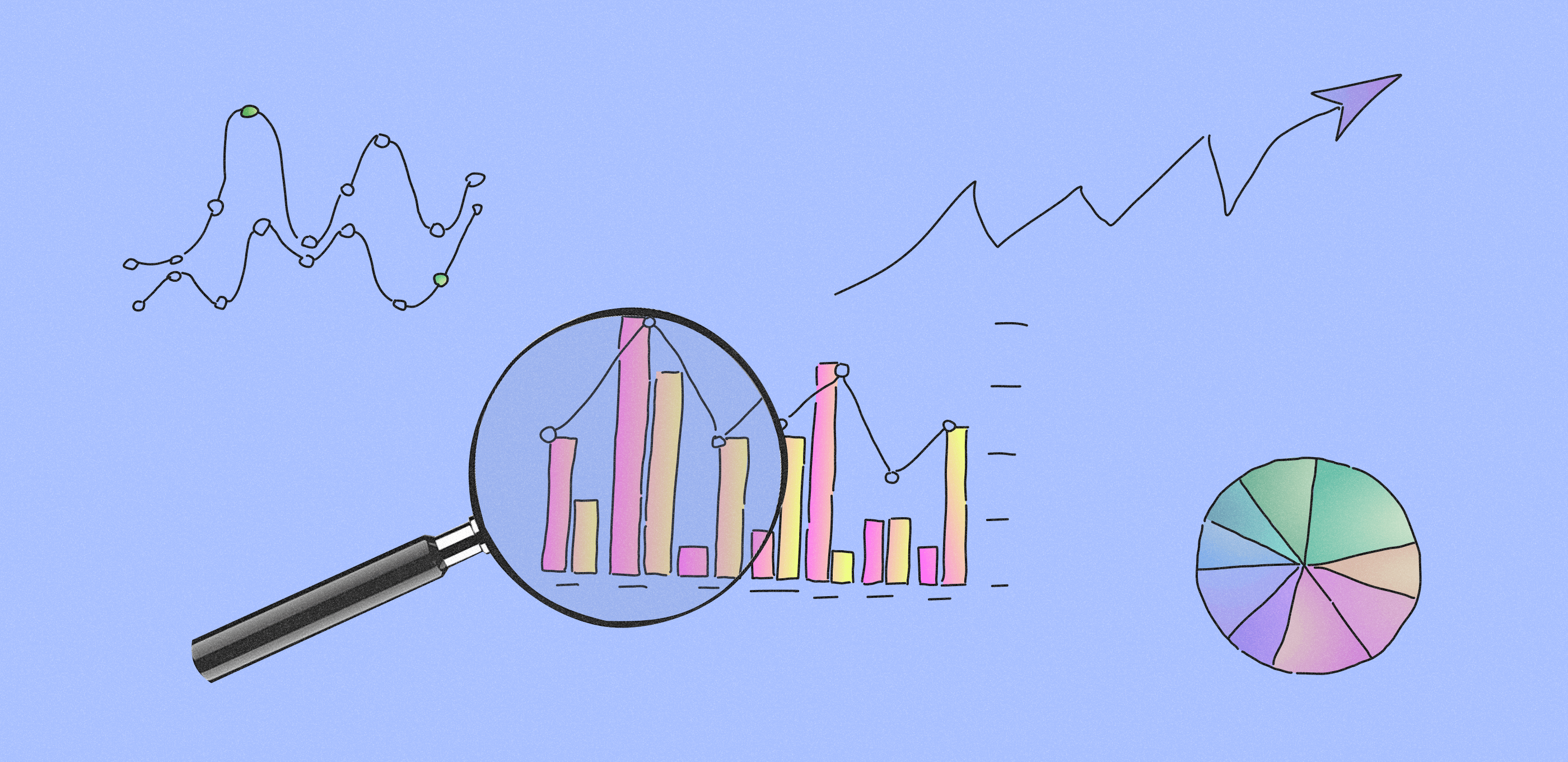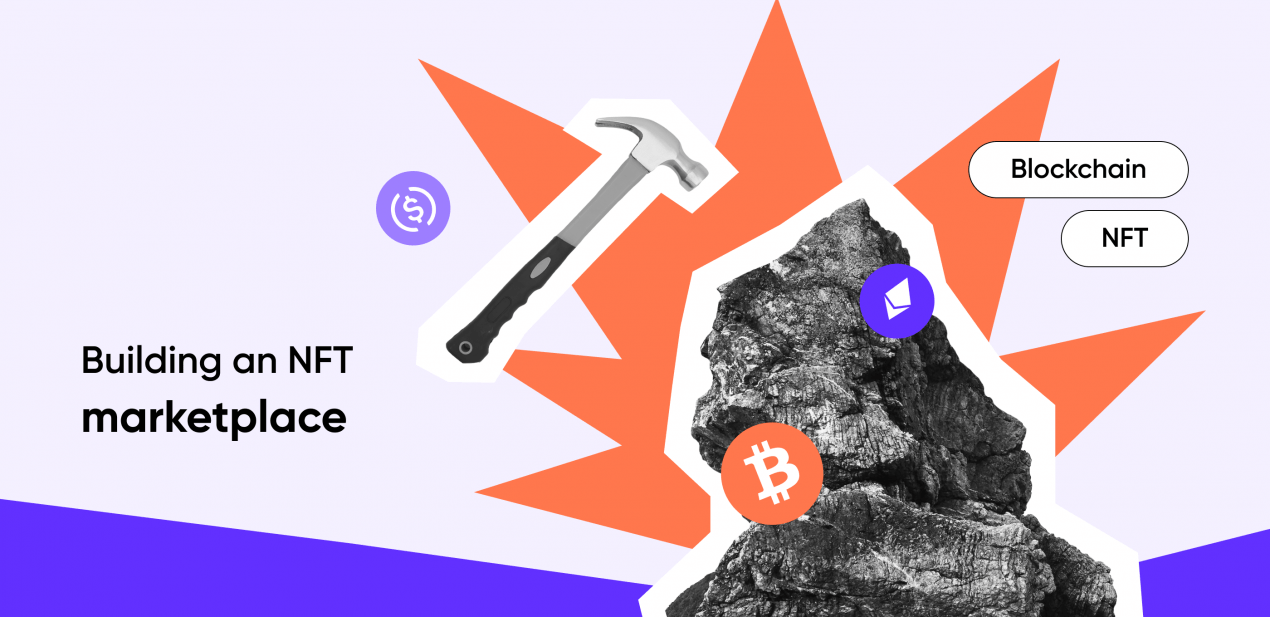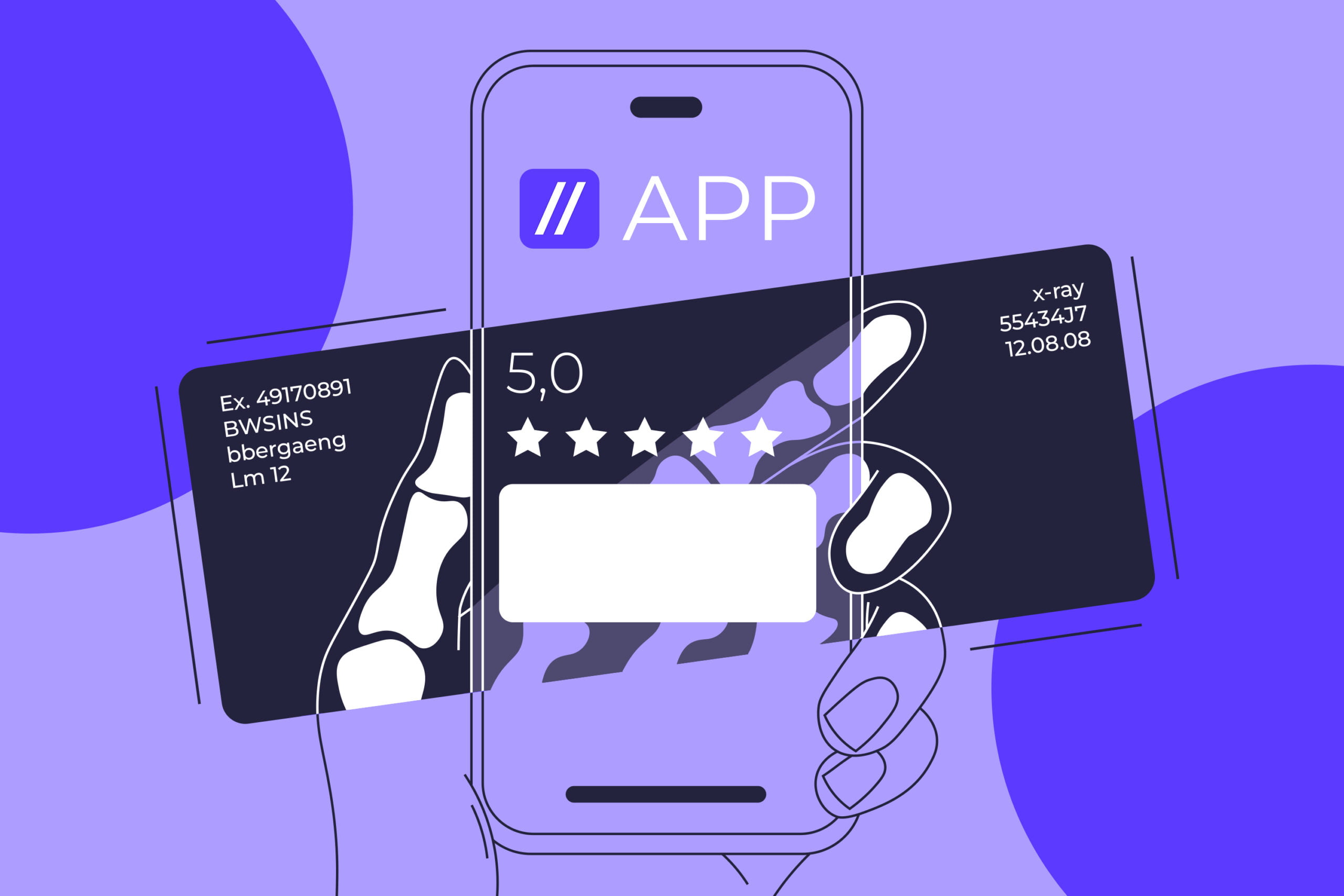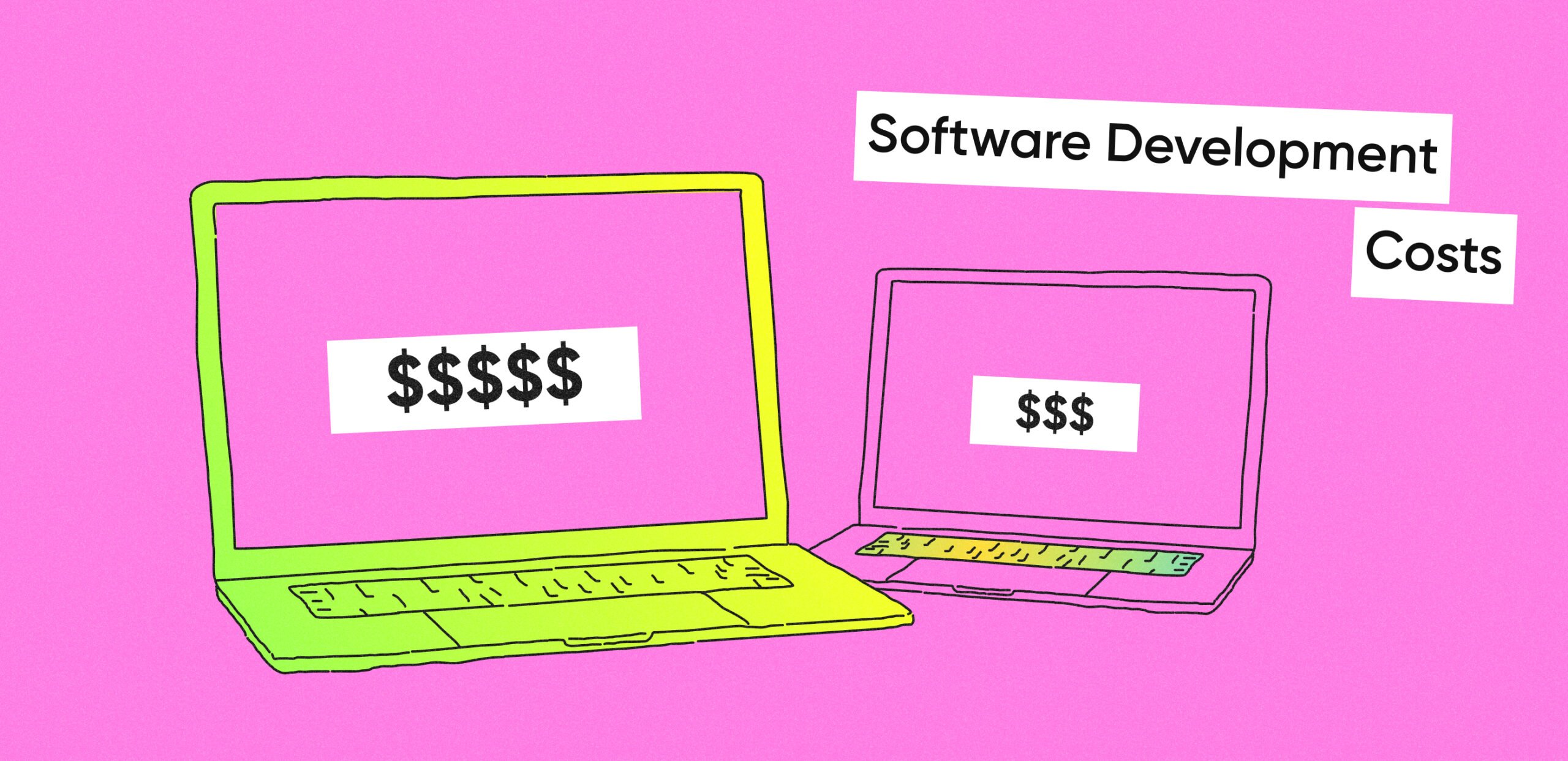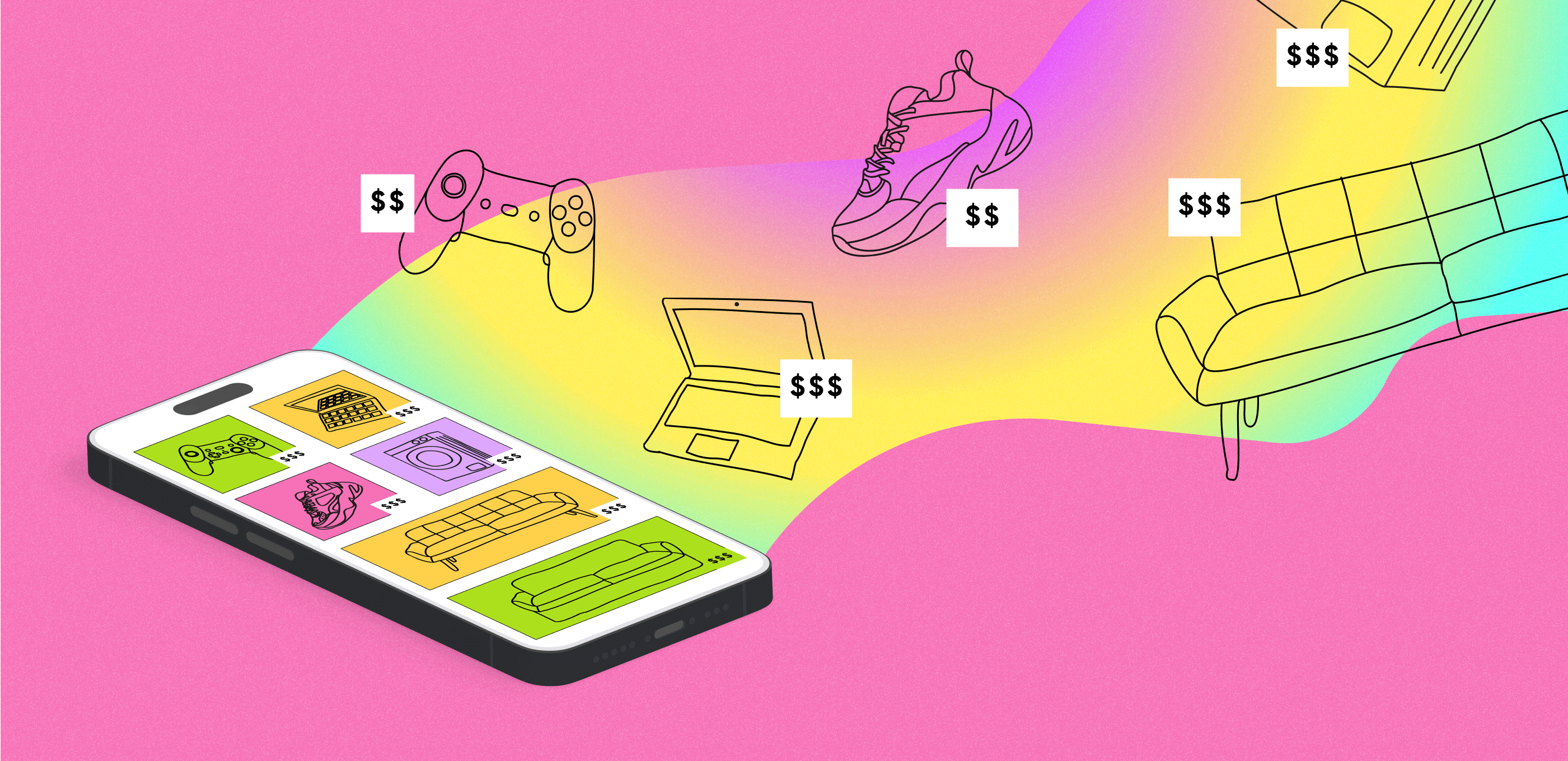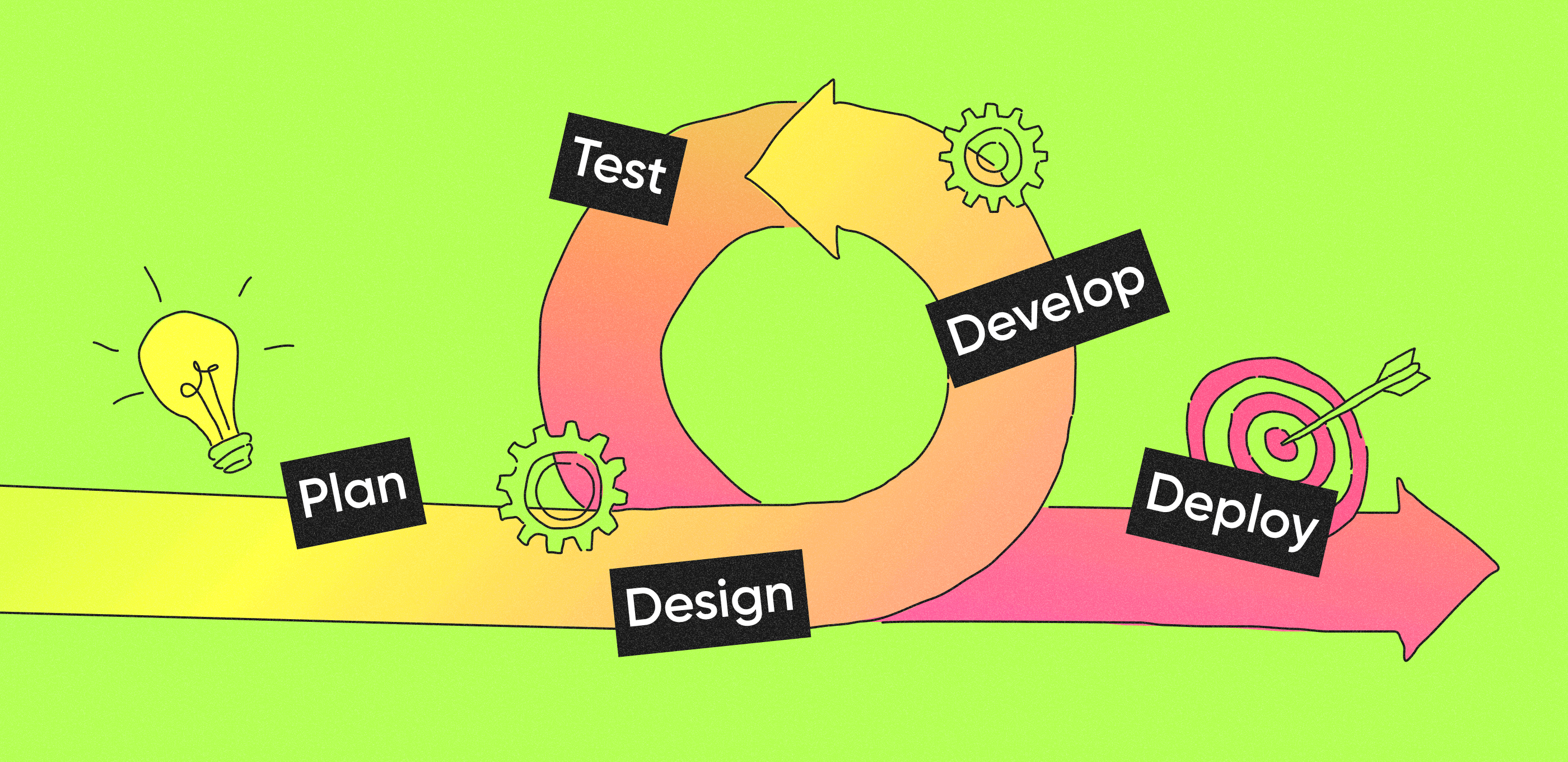Key takeaways
-
- The project discovery phase is a comprehensive analysis of the market and users before the launch. The goal of this service is to research and collect information about the market, user needs, and industry standards.
- Key people involved in the project discovery phase are a product owner, a business analyst, and potential users who participate in target interviews.
- The best practices for project discovery are to keep an open mind, embrace collaboration, stay agile, and document everything. With these rules, teams can navigate the complexities of the discovery and development process with confidence and clarity.
- At Purrweb, project discovery starts from $3,000 and it takes up to 8 weeks for us to complete the analysis and present the results.
What is the project discovery phase?
The discovery phase, also known as the scoping phase or business analysis, is a complex market research before any project development. Its goal is to study the demand, and that increases the chances of its success after launch. During this service, a team collects information about the demand, user needs, and potential revenue opportunities.
Think of buying a house. Before you sign the paperwork, you need to get the inspection done and determine the costs of renovations. If you discover any underlying problems or potential risks, you can back out. This is similar to the project discovery phase.
Discovery phase consists of two main parts: segment analysis and product analysis. At first, we research your segment — the audience who will potentially use your product — and study their needs, triggers, preferences, and requests, as well as current solutions in the market. If the idea is irrelevant to your segment, we suggest shifting the product focus or targeting a different audience. And if the segment search is successful, we move on to the product search.
Why is the discovery phase necessary
The main focus of the project discovery phase is to review the market and analyze how your project will fit. Is there a demand for your solution? What do users expect to see in an app? Are they willing to pay for a subscription? The project discovery service covers these questions.
The benefits are clear: you can go all in and spend ~$70,000 on an app that may be irrelevant or useless to users. Or you can spend 20 times less on the project discovery service and be confident in the success of your software launch.
Discovery phase deliverables will cover what to expect when you enter the market, how to plan the budget, and how to measure success.
4 key stages of the discovery phase
During the project discovery phase of any software development, a business analyst will dive into market dynamics and in-demand product features to inspect which aspects are relevant to your particular project. This process consists of 4 key stages.
We asked business analysts from our discovery team to describe each stage and prepared a summary of their points. Let’s dive in!
Step 1. Segment analysis
The first step of any project discovery is to find the segment that will be interested in your product. Through this research, we will learn who your audience is, what interests or concerns them, and what solutions already exist in the market.
A segment is a group of people that share the same needs. For example, people looking for unique travel destinations constitute a segment.
Important note: simply chatting with a user about his life ≠ high-quality segment interview. To determine whether a respondent is part of your segment, you need to find a qualifying factor — a pain or a certain need and the context in which it appears.
Here is an example of project discovery questions that users are asked during segment interviews:
- Tell us about the last time you faced this problem.
- What did you do to solve this problem?
- What was the most difficult thing in finding a solution?
- What don’t you like about the solutions you’ve already tried?
Results: Description of the target audience segment and their needs. This information can be used not only in product development but also as the basis for a marketing strategy.
Step 2. User interviews and volume-range of the segment
At the next stage, we dive deeper into the segment and study how many people will potentially want to buy your product. In addition to this, we look at other market segments to see if they address the problem you want to solve, as well as their strengths and weaknesses.
To do this, they usually conduct in-depth user interviews — a qualitative data analysis method — a conversation with users about their needs, expectations, challenges, and concerns.
Results: Recordings of user interviews, a contact list of potential clients, description of the segment volume and range. Also, at Purrweb, we have the option to involve the product owners at this stage and teach them to conduct segment research so that they feel confident improving the solution in the future.
Step 3. Product analysis and unit economics
If the demand for your idea is confirmed and the volume of the segment is sufficient to launch a profitable project, we move on to product analysis and unit economics. Once again, we conduct in-depth user interviews with your segment, but now we ask in more detail: how do users solve the need you are targeting, and what problems do they face when using current solutions?
Then, we calculate unit economics — how many customers there are in the market, how much they are willing to pay, and how scaling will impact revenue.
Unit economics is a method that helps determine whether a product will be profitable. As the basis, it uses one unit or one client.
At this step, we conduct project discovery research in several areas:
- We select options for product monetization models, calculate scalability, and describe their pros and cons.
- We predict the break-even point when the product will recoup investment in development.
- We recommend the price at which the product should be sold so that the economics of the product are profitable.
- We select important metrics: calculating the ideal % of conversion to purchase and retention rate.
Results: Product strategy, competitive analysis, interview notes, monetization model options, and the recommended price for your product.
Step 4. Presentation of the results
The last but important step is to present the results of the discovery phase to the product owner. The presentation should not only be clear and concise but should also be factual and have a strong foundation built on quantitative and qualitative data. Its goal is to explain what research the discovery team has conducted and what kind of product should be offered to the segment.
At the presentation, our project discovery team covers these questions:
- Is there a demand for your idea in the market?
- What should be in your product for people to like and buy it?
- How much are people willing to pay for your product?
- How much revenue can the product generate?
- How quickly can you recoup investments made in product development?
5 benefits of the discovery stage
The discovery phase of a project is a strategic investment that helps you research the market and inexpensively validate your product idea. Here are 5 key reasons why it is worth investing time, effort, and money into the project discovery service.
Sense of direction
This phase of a project provides a clear roadmap for the future software development process. With this service, you get business goals, scope, and requirements upfront and receive ready-to-go hypotheses about the market and business model. With this information, any software development team would clearly know what direction to go and what common objectives to work towards.
Cost savings
Project discovery service will ultimately save you money. Firstly, with this service, you can test out the idea of a software development project for cheap and see if there is a demand on the market for your model. Secondly, during the project discovery interviews, you can ask what features users want to see. Basically, you can get this valuable feedback for a fraction of the cost of an MVP or full-on software development.
Reduced risks
Speaking of risks, the discovery phase of a project helps you identify potential risks and build strategies to mitigate them. Through thorough research, prototyping, and user testing, discovery teams uncover issues and challenges before they become a problem, which ultimately saves valuable time and resources down the line.
Improved communication
The discovery process serves as a foundation that helps everyone involved understand the project’s vision, goals, and requirements. When your project team is on the same page, it fosters trust, a shared sense of ownership, and effective collaboration.
Enhanced user experience
When you opt-in for the discovery process, it includes in-depth user research, feedback collection, and design concepts for a product that resonates with its target audience. Ultimately, it reduces the chance of misunderstandings and frustration between end-users and your product interface.
Roles and responsibilities during the discovery stage
⚠️ Here, we’re sharing the details about how the project discovery team is structured at Purrweb. No guarantees that other companies offer the same roster of experts.
Behind any project discovery stage, there are usually 3 key players, each with distinct roles and responsibilities. Let’s review them closely.
1️⃣ Product owner
First things first: there is a visionary who came up with a product and is steering its direction behind any idea. You, as a product owner, provide context for the idea, the problem you aim to solve, and the vision you have for the solution. From our experience, the best way to ensure that the final product reflects your vision and meets your expectations is to get involved during the project discovery process.
2️⃣ Business analyst
This person is the bridge between the client and a future development team. The business analyst plays a crucial role in gathering and analyzing information. Their main responsibility is to conduct project discovery interviews, surveys, competitor research, and market reviews to understand the needs and preferences of the target users. The hypotheses built by a business analyst provide valuable insights into the project’s direction and features.
3️⃣ Potential end-users
The target audience is the project’s heartbeat, as their needs, preferences, and habits drive project development. During the discovery phase of a project, users participate in interviews, focus groups, and usability tests to provide honest feedback and insights into their expectations and pain points. Their input helps shape the UX of the project and ensures that the final product will be relevant on the market.
How to conduct a project discovery on your own: our guide
If you want to conduct the project development on your own but are not ready to learn the intricacies of the different methods and frameworks, you can use the guide below.
These 6 steps are a simplified version of what our outsourced business analysts do. Its goal is to give you a basic understanding of the market and build a foundation for deeper research if you decide to add the project discovery service later.
Step 1. Set your goals
Before diving into market details and competitors, it is essential to define your business goals and project scope clearly. What problem are you trying to solve? What objectives do you aim to achieve with your software? For example, you can use the SMART method — specific, measurable, achievable, relevant, and time-bound — to create goals and provide a clear direction for everyone involved in the discovery process.
Step 2. Gather requirements
Once your goals are established, it is time to roll up your sleeves and gather requirements. This involves defining a target audience and user stories, selecting competitors, and outlining functional and non-functional requirements. Workshops and brainstorming sessions are effective ways to capture requirements and prioritize features based on their importance and impact.
Step 3. Analyze the market
Understanding the market landscape is crucial for positioning your product effectively and identifying growth opportunities. Conduct market research to analyze industry trends, competitor offerings, and customer demographics. Consider not only that but also whether the market has a large enough target audience. What if you launch a product and there are just not enough users to make it profitable?
The insights into market dynamics and consumer behavior can help tailor your product strategy to meet top trends and stay ahead of the competition.
Step 4. Conduct interviews
Engage with end-users and industry experts through interviews to learn more about their needs, pain points, and expectations. Ask open-ended questions and actively listen to their feedback to uncover hidden insights and unmet needs. These insights serve as the building blocks for designing a user-centric solution that resonates with its intended audience.
Step 5. Gather analytics and find patterns
Analyze user interactions, engagement metrics, and conversion rates to gain insights into how users interact with your product. At this point, you need to consider different models for your product. Identified trends and patterns will refine your project development strategy, optimize user experiences, and drive meaningful outcomes.
Step 6. Create hypotheses
Finally, synthesize the findings from your discovery process and present them to team members. Use visual aids, such as charts and graphs, to communicate key insights effectively. Discuss the implications, address any concerns or questions, and collaboratively define the next steps for the project. By fostering open communication and transparency, you ensure that everyone is on the same page and committed to the success of the project development.
4 best practices for conducting the project discovery phase
Keep an open mind
Being married to an idea is dangerous. Even if your app concept is one-of-a-kind and truly innovative, without market demand and profit opportunities, you won’t stand a chance. Be ready to pivot and switch to different models or audiences. Sometimes, big breakthroughs and success stories emerge from the most unexpected things.
Tip №1. Be open to new ideas and perspectives — you never know where the next big breakthrough will come from.
Stay agile
Software development is a dynamic field where preferences and purchasing power change frequently. Be prepared to adapt and change your MVP as necessary. Remember that Amazon started as an online bookstore, while Uber initially catered to black luxury cars only. It is fine to swiftly change ideas to adapt to user requests and emerging market opportunities.
Tip №2. Flexibility is key in the fast-paced world of software development. Be prepared to pivot if necessary.
Embrace collaboration
From our experience, collaborative efforts often yield the most creative and innovative solutions. Encourage team workshops and brainstorming sessions where everyone can bring their unique vision and experiences, generate fresh ideas, and inspire others.
Tip №3. The best ideas often come from brainstorming sessions and collaborative efforts.
Document everything
Comprehensive and clear documentation is the key to keeping everyone on the same page. It facilitates transparency, accountability, and effective communication among team members.
Tip №4. From meeting notes to user feedback, document every step of the discovery process to keep everyone on the same page.
Cost and timeline for the discovery phase of a project
Without further ado, let’s get down to the most important thing: money.
The cost and timeline for the discovery phase of a project can vary depending on the complexity of your project and the size of your team. On average, you can expect the discovery phase to take anywhere from a few weeks to a few months, with costs ranging from a few thousand to tens of thousands of dollars.
We researched average prices and timelines on the market, and here is what we found:
Average cost: from $5,000 to $15,000
Average length: from 2 days to 1 month
Our cost: starts from $3,000
Our timeline: 8 weeks
What deliverables will you get for this price?
At Purrweb, our main discovery stage deliverable is an extensive document, usually 50+ pages long, that contains all the details about your positions on the market, user feedback, and improvement tactics.
| Area of research | Method | Deliverables |
| Segment description | In-depth interviews with people who have the needs you target, and it has not been met yet. | Target audience description for marketing and product strategy; database of potential clients |
| Segment volume | We calculate how many people on the market are ready to buy your product | Unit economics, projection of changes during scaling, recommended monetization models |
| Segment problems | In-depth and solution interviews to find out how the segment solves a need | Product strategy, list of priority features to solve |
| Segment needs | Analysis of current solutions on the market and a breakdown of competitors’ problems | Competitor and market review |
Final words
So, is project discovery necessary for a successful software venture? To be completely honest, sometimes it is not. We saw projects get launched with or without it.
But getting into the development process without the discovery stage is like going all in. You can either risk and lose everything or undergo a proper project discovery phase and get a chance to release your solution with great success.
Instead of spending $100,000 on an app that will end up irrelevant, you can pay ~$3,500 for the discovery stage to test the waters and get numbers-driven insights about the market and your users.The discovery phase lays the groundwork for understanding the market and defining the project vision. In essence, the discovery phase of a project is not just a preliminary step that you can skip with no consequences; it is a strategic investment and commitment to the success and sustainability of software development projects.
About us
Purrweb is a team of 180+ tech professionals willing to help startups from all over the world with UI/UX, web, and mobile app development. Our goal is to help businesses validate hypotheses quickly but without quality loss. Be it the discovery phase of a project, a mobile, web, or desktop app idea — with us, you can test this out by creating an MVP, the very first product version you can deliver to market.
Want to validate your idea without development? Get in touch with our team to get a free consultation on the project discovery service.

